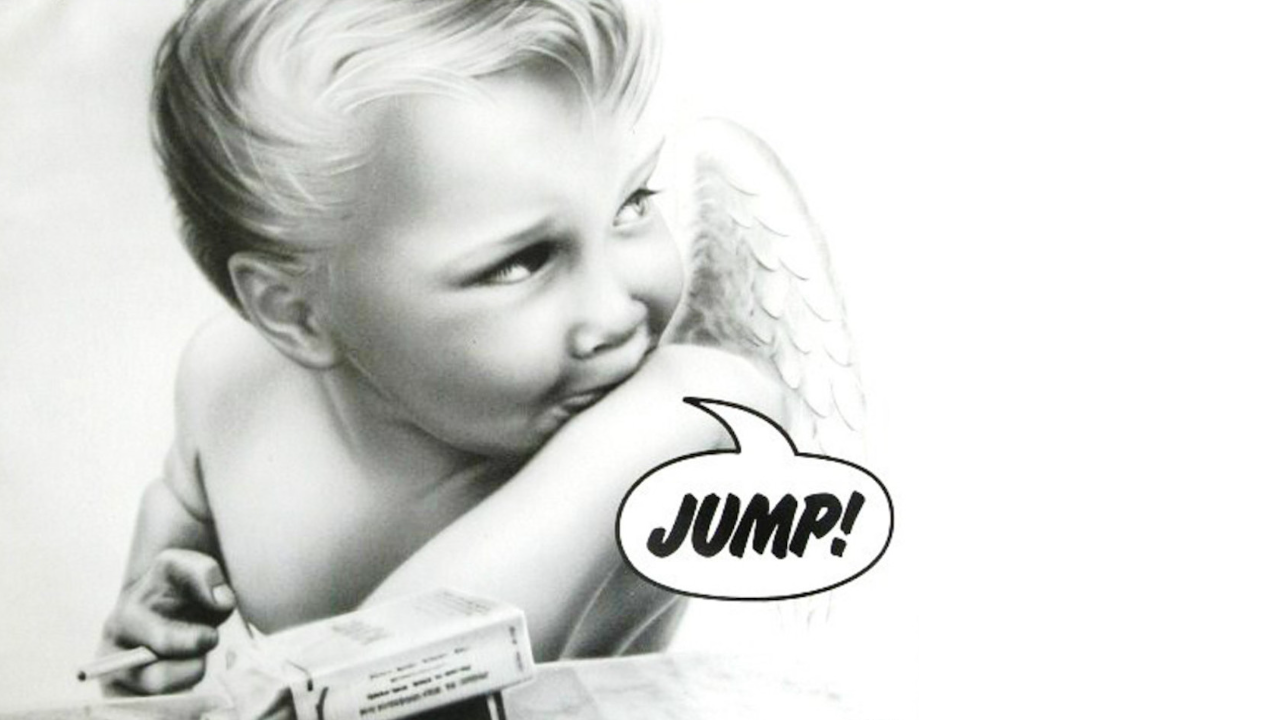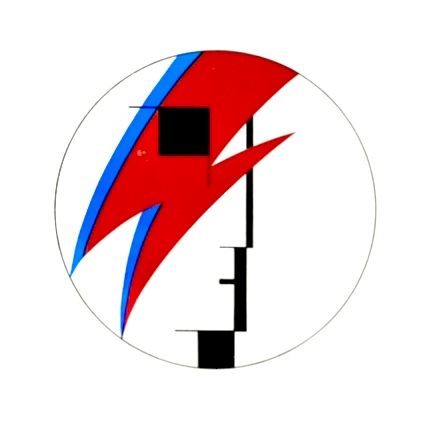After seven weeks in the charts, on 25 February, 1984, Van Halen's Jump went to no.1 in the Billboard Hot 100. It was the peak of Van Halen MK1 but maybe the cover of the single – the image of a mischievous sprite with a cigarette in hand – alluded to some of the problems behind the scenes. Maybe this was a band that might experience some problems with the ageing process.
“I hate the word maturing,” singer Dave Lee Roth had told Rolling Stone in 1978. “I don’t like the word evolving, or any of that bullshit. The idea is to keep it as simplistic, as innocent, as unassuming and as stupid as possible.”
Driven by a massive synth hook, Jump was an evolution alright, driven not by Roth but Eddie Van Halen, the band's genius guitar player and songwriter. "I remember Dave hearing Jump and he did not want to do it,” bassist Michael Anthony told Billboard. “He told Eddie, ‘You’re a guitar hero. You’re not a keyboard player. You need to play guitar.'”
So Jump had gone on the backburner. But Eddie was tiring of Roth's way of working. He wanted to evolve. 1982’s Diver Down album was thrown together in the eyes of the guitarist. The real bugbear, though, was its cover of Martha And The Vandellas’ Dancing In The Street, a song chosen by self-confessed Motown freak, David Lee Roth.
The song gnawed away at Eddie’s sense of creative freedom, made worse by the feeling that producer Ted Templeman and Roth had “stolen” his original piece of music (the song’s inventive and pulsating Minimoog riff) to use on yet another cover tune. “I fucking hated that song. I never wanted to do it. That was the reason I decided to build my own studio.”
EVH built his own studio, 5150, with the help of Van Halen engineer Donn Landee, and set about working on the sounds in his head. He was fresh from working with Michael Jackson and Quincy Jones on Thriller. Beat It was conceived as something along the lines of My Sharona, a huge hit for The Knack in 1979. With the help of Donn Landee, EVH had knocked out a number 1 hit for Jackson.
And he hadn't told the rest of the band. The first Dave Lee Roth heard about it was on the radio. “The new Michael Jackson song, Beat It, came on,” Dave recalled later. “I heard the guitar solo, and thought, now that sounds familiar. Somebody’s ripping off Ed Van Halen’s licks.”
“Believe it or not,” Eddie told Guitar World in 1990, “I did the Michael Jackson thing ’cos I figured nobody’d know. The band for one – Roth and my brother and Mike – they always hated me doing things outside of Van Halen. I just said ‘Fuck, I’ll do it, and no one will ever know.’ So then it comes out and it’s song of the year and everything.”
It gave him the confidence to work on Jump. Fuck what Dave thought. Daryll Hall told Mix magazine that Eddie confessed that the synth part had been inspired by Hall & Oates' Kiss on My List.
“I put it down with a Linn drum machine," Eddie said of the recording, "but when I played it for the rest of the guys in the band they said, ‘Look, Edward, you’re a guitar hero. Don’t stretch yourself too thin. Don’t start playing other instruments.’”
When they finally caved in, the song was duly recut by the whole band in a single take. With the instrumental track on a cassette tape, Roth left to work on the lyrics and vocal melody in his own peculiar fashion – which just happened to involve being driven around the Los Angeles canyons and along the Coast Highway by Larry Hostler, his roadie.
The story goes that Roth remembered a news item from the night before about a suicidal jumper. Roth joked to Larry that an onlooker probably shouted, "Go ahead and jump". The line fitted the music. Roth imagined the jumper thinking, "Yeah, might as well jump." Larry laughed.
Bingo. By the end of the ride, the lyric had evolved into something else – something far more life-affirming, with words and the sentiment that actually matched the feel of the music. The bridge section in particular, with Eddie playing a tastefully chosen guitar lick and Alex complementing him on cymbals, actually give the sense, like the title of the song itself, of becoming groundless, lifted up by a gust of air.
Released in December 1983, it crept steadily up the charts, buoyed by a Roth-directed video that got heavy rotation on MTV. The album, 1984, stalled at no.2. It was kept off the top spot by, guess what: Michael Jackson's Thriller. The fight for control of Van Halen had reached its final stage and there could only be one winner.

